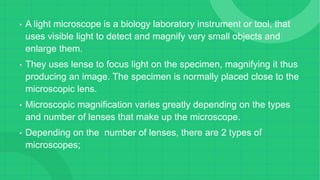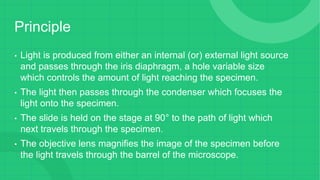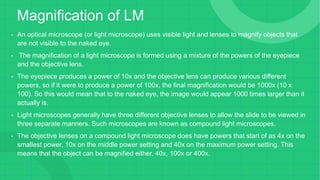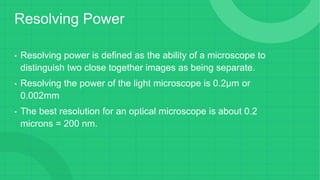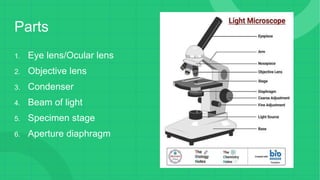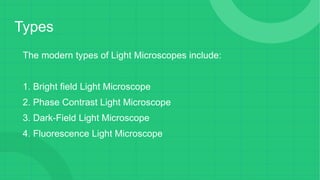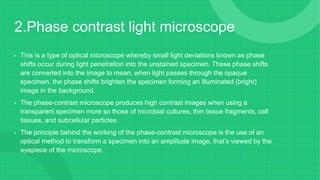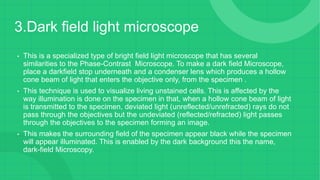Light microscopy, the simplest form of microscopy, uses visible light and lenses to magnify small objects and organisms, with magnification depending on the number and type of lenses used. There are various types of light microscopes, including bright field, phase contrast, dark field, and fluorescence microscopes, each serving specific applications in biology and microbiology. While light microscopes are easy to use and relatively low-cost, they have limitations such as lower resolution and inability to operate in darkness.


